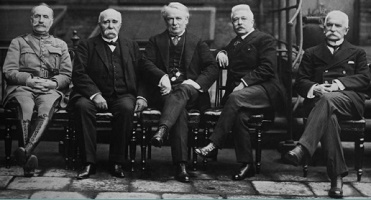What is an objective?
We explain what the objectives are and what they are for. In addition, other meanings of the term, types of objectives and some examples.
-
What is an objective?
An objective or purpose is a goal or ultimate goal towards which the actions or operations of a specific project are directed . Everything we do has an end, a final meaning where we want to go, which is the sum of the steps taken to achieve it. That is an objective, and on our ability to achieve it or not, our measure of success or failure will generally depend.
The objectives are usually raised before taking action , since it is convenient to know where we are going before we start walking, that is, we can only determine the best route to success if we know what the objective we have set ourselves is. Thus, the objectives are part of any planning attempt in any field.
Academic research, feasible projects, business plans or military strategies always have in mind the objective set beforehand, and therefore seek to determine the most convenient method (faster, safer, more lucrative, etc.) to convert it actually. Once an objective has been reached, another will arise later in order to continue the action.
-
Objective and subjective
Another use of the objective term is that which has to do with objectivity , a word that derives from the name of microscope lenses , longview and other devices that allow us to clearly see what is normally invisible. In this sense, the objective has to do with what is not clouded by external considerations, that is, for reasons that have nothing to do with the observed.
For example, if a person asks another their objective opinion about how they are wearing a garment, they are asking for a stark, real opinion, to put aside caution or fear of hurting them with their opinion and simply say what you think
The opposite, in that sense, is the subjective: that which depends on the point of view of each person, on their emotions and personal opinions. An objective judgment is not carried away by emotions or feelings; a subjective judgment, on the other hand, is made up of them.
-
Objective Types

The objectives are usually classified in two different ways:
According to the time it takes to do it . The objectives are classified in three, depending on how close their realization is in time:
- Short term objectives . Those who are very close to being carried out or who will take little time to specify.
- Medium term objectives . Those who cannot be specified immediately, but also in the very distant future.
- Long term goals . Those we propose for an uncertain future, usually remote, but that guide our present actions.
According to your perspective . Based on the elements they focus on, the objectives can be of two types:
- General objectives . Those that are very comprehensive or broadly involve a task.
- Specific objectives . Those who are bounded or go on time, to a specific task.
-
Objective Examples
Some examples of medium, short and long term objectives can be:
- Smoking half of cigarettes daily (short term)
Smoking half or less of packs per month (medium term)
Quit smoking (long term)
- Increase the weekly sales of the website (short term)
Increase the client portfolio twice (medium term)
Take over the market and be a leader in the region (long term)
- Jogging fifteen minutes every day (short term)
Lose a couple of kilos at the end of the month (medium term)
Stay fit (long term)
-
Management Objective

The administration proposes a single objective: efficiency . This means the best or most convenient management or management of the resources available for some purpose, so that not only the proposed goal can be achieved , but also that it be done in a definitive, precise and no more costly way. the indispensable
For this, the administration defines the most suitable structures for the use of the available resources, evaluating the entry, exit and control processes available to an organization or a system, be it a company , a country or a family.
-
Other types of objectives
- In organizations, the objectives are the values and purposes that are intended to be carried out in the near future. In the science of marketing , the objectives refer to product innovation in order to encourage sales, increase productivity and so on. We can also talk about the objectives at work when we refer to those goals that a professional wants to achieve as such, such as reaching a high position at work or being able to do a doctorate or volunteering, any fact that adds to your curriculum vitae.
- The objectives in learning are stages that are gradually being fulfilled and prove that knowledge has been acquired. Teachers often carry out periodic evaluations to be able to test if all their students are at the same height in learning , if all have already met the objective of that month, for example.
- We also talk about objectives when we refer to the practice of shooting where you shoot at them and aim to add experience. This goal is set at a distance and respecting this, shooters practice. For example, the slogan can be to shoot at a target at a distance of about 25 or 30 meters.
- In the military field , an objective is a place or thing that will be occupied by having a specific plan to be able to reach it. In this case, an objective may be to take down an airplane, occupy an area or rescue someone.
- In the field of optics we talk about an objective referring to a lens, which functions as an instrument that will be located in the area that points towards an object.



